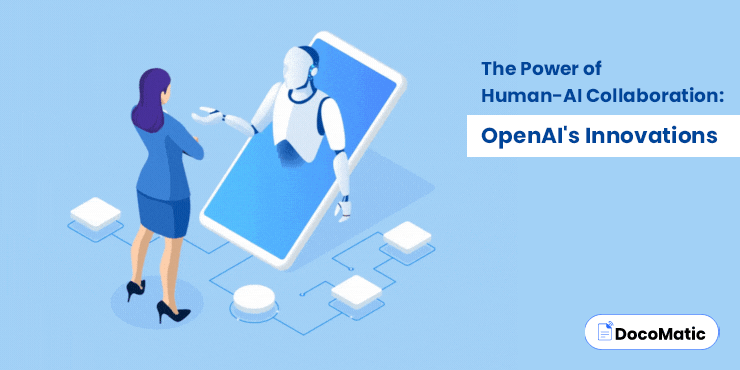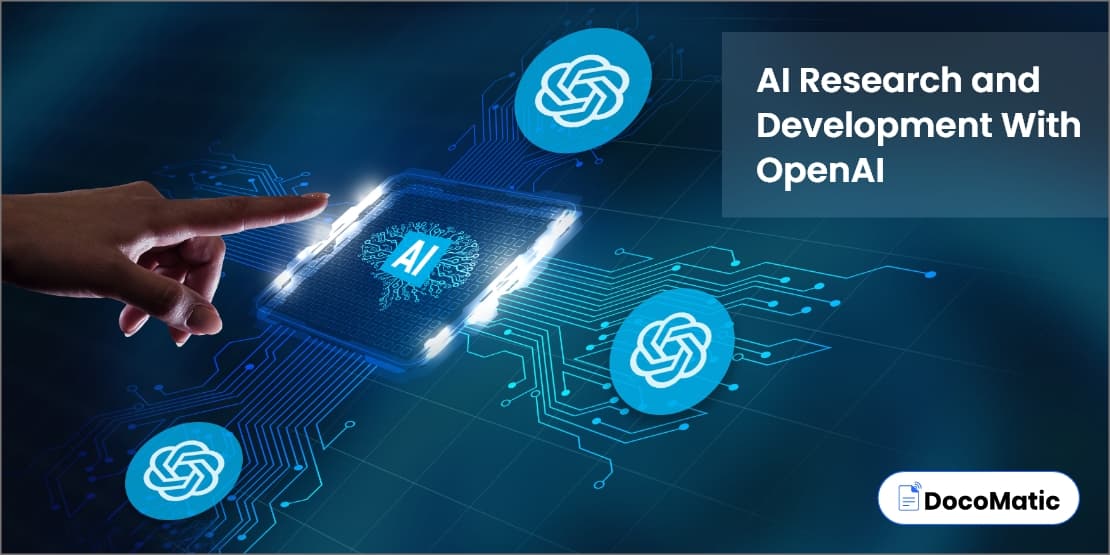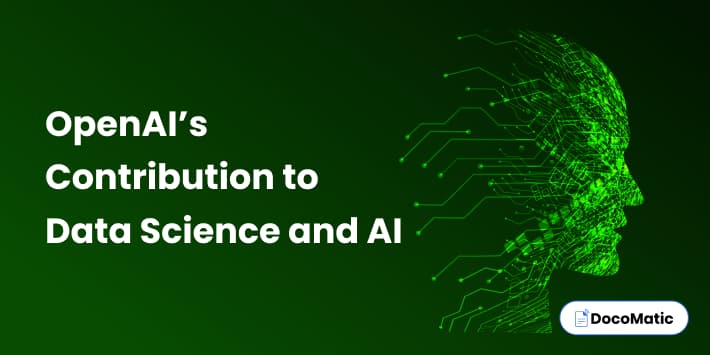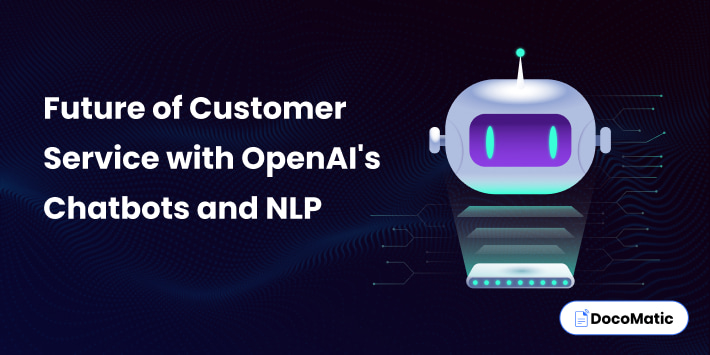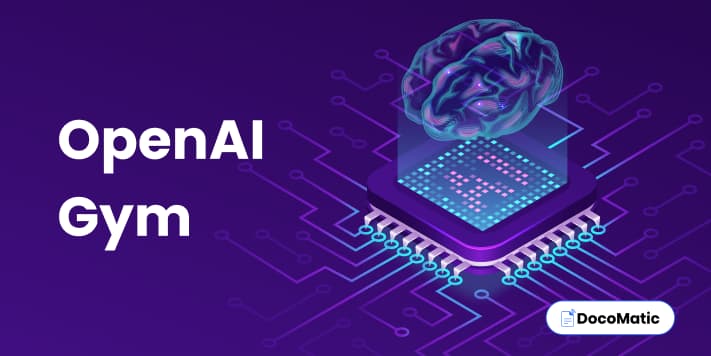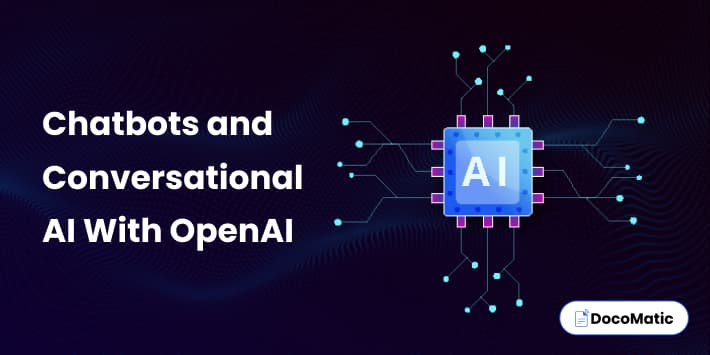Artificial intelligence is becoming useful for many industries today. Whether it’s self-driven cars, dancing robots, or AI chatbots, AI systems are creeping into the public.
Companies must understand how humans can best complement technology, how machines can enhance what humans do best, and how to restructure business processes to support the partnership if they are to fully benefit from this collaboration. We have developed guidelines to assist businesses in achieving this and harnessing the power of human-AI collaboration as a result of our study and work in the industry.
In this article, we will cover innovations due to human-machine collaboration, AI system challenges, and benefits.
Table of Content
- How OpenAI is Paving the Way for Effective Human-AI Collaboration
- OpenAI’s Innovations for Human-AI Collaboration
- 5 Challenges of Human-Artificial Intelligence Collaboration
- 7 Benefits of Human-AI Collaboration
- Examples of OpenAI’s Natural Language Processing in Various Industries to Achieve Optimal Outcomes
- Conclusion
How OpenAI is Paving the Way for Effective Human-AI Collaboration
A research company called OpenAI is committed to advancing artificial intelligence in a way that is responsible, open, and helpful to everyone. The company has been working hard to encourage productive collaboration between humans and AI since it understands how crucial it is to attain these objectives.
Through its initiatives to conduct research and development, OpenAI is paving the way for successful collaborative intelligence. OpenAI has been working to create AI systems that can cooperate with people in a variety of fields, including language processing, robotics, and healthcare.
For instance, OpenAI’s GPT-3 (Generative Pre-trained Transformer 3) language model can help people create content such as songs, essays, and other media.
To encourage collaboration, OpenAI also emphasizes the flexibility and interpretability of its AI models. OpenAI has been focusing on developing methods that make AI models more visible and explicable since it realizes that humans need to understand how AI technologies make decisions. For instance, the GPT-3 model from OpenAI offers a mechanism for people to examine and comprehend the model’s output generation process.
Additionally, OpenAI engages with academics, industry, and government agencies to foster effective human-AI collaboration. OpenAI collaborates with academic institutions to carry out research and offer learning materials to increase the comprehension and advancement of AI.
Let’s discuss the innovations of collaborative intelligence.
OpenAI’s Innovations for Human-AI Collaboration
OpenAI’s research and development efforts
When it comes to research and development in the area of human-AI collaboration, OpenAI is at the forefront. The group works to develop AI systems that are clear and intended to collaborate with people. Experts in computer science, cognitive science, and social science collaborate on OpenAI’s interdisciplinary research projects.
The following are some of the main focuses of OpenAI’s research on human-AI cooperation:
Natural Language Processing (NLP): OpenAI’s language models, including GPT-3 (Generative Pre-trained Transformer 3), are made to comprehend and produce language that is similar to human speech. These models can be applied to a range of tasks, including content production, chatbots, and language translation.
Computer Vision: The main goal of OpenAI’s research in this field is to create algorithms that can evaluate visual input and extract valuable information. Included in this are initiatives like DALL-E, a neural network that can produce visuals from textual descriptions.
Reinforcement Learning: OpenAI’s reinforcement learning research aims to create algorithms that can collaborate with humans and learn via trial and error. Projects like OpenAI Five, a group of AI players for the video game Dota 2, fall under this category.
The promise of human-AI collaboration has been demonstrated by a number of cutting-edge technologies that OpenAI has created. Here are a few instances:
- GPT-3: GPT-3 is a language model that can generate human-like text with remarkable accuracy. The model has 175 billion parameters, making it one of the largest language models ever created. GPT-3 can be used for a wide range of applications, such as chatbots, content creation, and language translation.
- DALL-E: DALL-E is a neural network that can generate images from textual descriptions. The model can create images of objects and scenes that do not exist in the real world, such as “an armchair in the shape of an avocado.” DALL-E is an example of how AI can be used to enhance human creativity and generate new ideas.
- OpenAI Five: OpenAI Five is a team of AI agents that can play the complex video game Dota 2. The agents use reinforcement learning to learn from their mistakes and improve their gameplay. OpenAI Five is an example of how AI can work collaboratively with humans to achieve a common goal.
OpenAI’s emphasis on transparency and interpretability
OpenAI recognizes the importance of transparency and interpretability in AI systems. The organization is committed to creating AI systems that are transparent and explainable, enabling humans to understand how the system works and make informed decisions.
OpenAI has developed several techniques for enhancing the transparency and interpretability of AI systems. These include:
Attention Mechanisms: Attention mechanisms are a type of neural network architecture that enables humans to understand how the model is processing information. This can help identify biases and improve the accuracy of the model.
Counterfactual Explanations: Counterfactual explanations are a technique for explaining the reasoning behind a model’s decision. This involves generating “what-if” scenarios to show how changing the input data would affect the model’s output.
Human-in-the-Loop Approaches: Human-in-the-loop approaches involve incorporating human feedback into the training process of an AI model. This can help improve the accuracy and interpretability of the model.
Now let’s shift to the difficulties faced by optimizing collaboration.
5 Challenges of Human-Artificial Intelligence Collaboration
Here are the five challenges of the AI system merging with human interaction.
Humans are not as strong as machines. So, being close to human partners is crucial. Also, placing “fragile” people next to these potent machines could be harmful.
Nowadays, these risks are reduced by forbidding people from working close to operating robots. separating human workers from machines in entirely different workspaces. These divisions are occasionally impossible in a collaborative setting. As a result, active robots, also known as collaborative robots, must cooperate with humans.
Data overload
For machine learning and data analytics, both filtered and uncensored data can be employed. It is necessary to do a detailed analysis of existing and upcoming market trends, customer behaviors, and needs. Data analytics is used to extract insights from this data to assist organizations in making decisions. Massive amounts of data can overwhelm systems and slow down decision-making.
Cost
AI enables businesses to guarantee the performance and cost-efficiency of their operations. However, other companies might not be able to afford these resources. Their ability to grow and adapt is so limited.
Reimagining Human and Robot Roles
Humans should live in harmony with one another. This must take into account the broader sociotechnical context. The human being shouldn’t be considered a sign of the problem. Modern AI systems are constrained in their ability to sense, manipulate, and analyze communication.
Machines will become increasingly significant as capabilities rise. This might lead to new responsibilities for machines in the context of human-machine collaboration. Also, it would change how human-machine teams function.
Human-machine interaction
Effective communication considerably slows down the advancement of human-machine collaboration. Robots must give people better explanations of what they can and cannot do, as well as what they really do.
Our inability to articulate this makes collaboration between humans and machines challenging. Another problem is nonverbal conduct, like how a robot might observe what a person notices.
With greater machine observability and apparency, humans will be able to comprehend a device’s intent more easily. If the robot asks for assistance when it needs it, humans may not need to monitor what it does. It’s challenging to convey intent to robots and humans.
Resilience and Flexibility
For improved AI collaboration, more adaptability and resilience are required. People are capable of adapting to new circumstances and using their skills. Yet, with substantial programming, robots cannot achieve the same level of versatility.
Human flexibility can help us learn, such as through the widespread acceptance of text messaging and the adaption of human language. We cannot wait for the natural language of robots for desired outcomes. It is necessary to do a thorough examination of instances in which humans can adapt but not robots. To attain resilience, innovations in decision-making abilities are required.
7 Benefits of Human-AI Collaboration
Increased decision-making and problem-solving accuracy and efficiency: AI systems can evaluate enormous volumes of data and offer insights that people may not have otherwise been able to locate.
In the banking sector, for instance, AI algorithms are used to examine financial data and spot trends that can assist investors in making better choices.
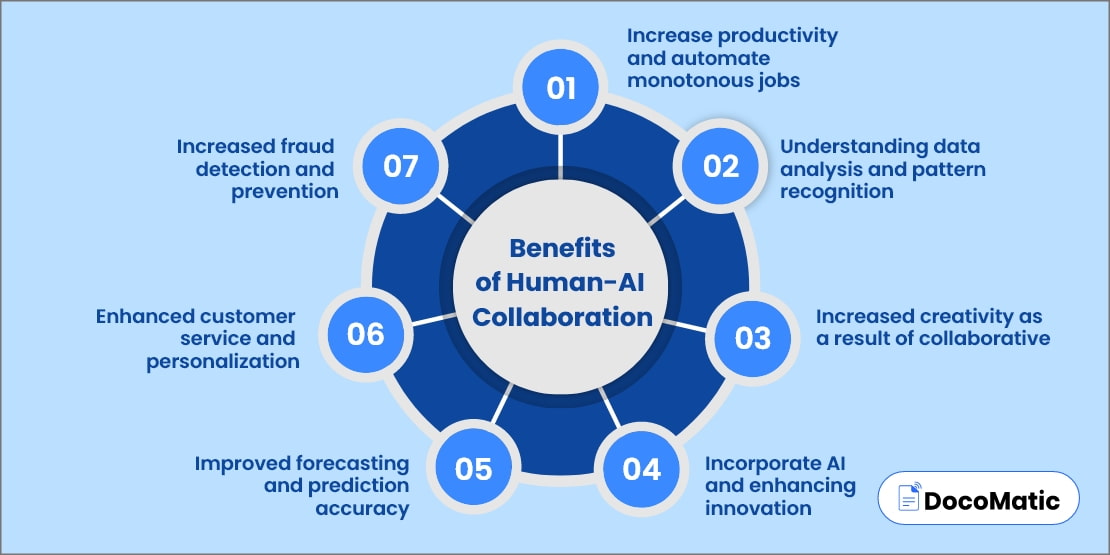
1. Increase productivity and automate monotonous jobs
AI systems can focus on more complicated tasks that require human expertise while automating routine chores, freeing up humans to work on routine tasks.
For instance, AI algorithms are utilized in the healthcare sector to automate medical picture interpretation, cutting down on the time needed for diagnosis and treatment planning.
2. Understanding data analysis and pattern recognition
Large datasets can be analyzed by AI systems, which might spot patterns that humans might have missed, leading to fresh research and insights.
In the scientific community, for instance, business leaders use AI algorithms to evaluate genetic data and find novel disease-related medication targets.
3. Increased creativity as a result of collaborative intelligence
AI systems can offer thoughts and suggestions that encourage people to think creatively and beyond the box.
As an illustration, AI algorithms are employed in the art field to create novel artistic expressions that motivate human artists.
4. Incorporate AI and enhancing innovation
AI initiatives performed can provide suggestions and ideas that can inspire humans to think outside the box and come up with new ideas.
Example: In the art world, principles companies adopted use AI algorithms to generate new art forms that inspire human artists.
5. Improved forecasting and prediction accuracy
AI systems can analyze historical data and identify patterns to make accurate predictions about future trends and outcomes. By combining human domain expertise with AI’s quantitative capabilities, forecasting, and prediction accuracy can be improved.
Example: In the energy industry, human-AI collaboration is used to cultivate related employee skills, and optimize energy demand forecasting, leading to more efficient use of energy resources.
6. Enhanced customer service and personalization
AI systems can analyze customer data to provide personalized recommendations and improve customer service. By incorporating human feedback and natural language processing, AI technologies can be fine-tuned to better understand and provide support to customer needs.
Example: In the retail industry, human-AI collaboration is used to develop personalized marketing strategies that increase customer engagement and loyalty.
7. Increased fraud detection and prevention
AI systems can analyze vast amounts of data to detect fraudulent activities and patterns.
By combining human expertise in identifying potential fraud with AI’s analytical capabilities, fraud detection, and prevention can be significantly improved.
Example: In the banking industry, human-AI collaboration is used to detect and prevent fraudulent transactions, leading to improved security and trust among customers.
Let us now give you a few examples of AI systems that have made a huge impact on various industries with their operational measures and support.
Examples of OpenAI’s Natural Language Processing in Various Industries to Achieve Optimal Outcomes
In this section, we will discuss some of the game-changing applications of OpenAI’s innovations in human-AI collaboration. We will explore how these applications are being used to solve real-world problems and improve various industries.
Healthcare
OpenAI’s GPT-3 has been used to develop chatbots that can assist with mental health counseling and support. These chatbots are able to converse with patients in a natural language and provide them with resources and coping strategies. OpenAI’s image recognition technology has been used to automate medical image analysis, improving the speed and accuracy of diagnosis and treatment planning.
Finance
OpenAI’s algorithms are being used to analyze financial data and identify patterns that can help investors make more informed decisions. OpenAI’s GPT-3 is being used to generate financial reports and market analyses, improving the speed and efficiency of these processes.
Education
OpenAI’s language models are being used to develop personalized learning systems that can adapt to each student’s individual needs and learning style.
OpenAI’s GPT-3 is being used to generate educational content, such as lesson plans and study guides, improving the accessibility and availability of educational resources.
Robotics
OpenAI’s reinforcement learning algorithms are being used to train robots to perform complex tasks, such as sorting and manipulating objects.
OpenAI’s natural language processing technology is being used to develop robots that can understand and respond to human commands and queries.
Creative Industries
OpenAI’s DALL-E is being used to generate new and innovative designs for products and artwork, inspiring human creators and pushing the boundaries of what is possible.
OpenAI’s GPT-3 is being used to generate creative writing, such as poetry and fiction, that rivals the quality of human-written works.
These are just a few examples of how OpenAI’s innovations are being used to improve various industries and solve real-world problems. By combining the strengths of humans and AI, we can achieve outcomes that would not be possible with either one alone.
Conclusion
To sum up, OpenAI’s breakthroughs are redefining the field of productive human-AI collaboration. OpenAI is establishing the benchmark for moral and responsible AI development by placing a strong emphasis on transparency and interpretability. Collaboration between humans and AI has many advantages, including better decision-making, increased efficiency, and improved creativity and innovation.
The potential for human-AI cooperation is limitless as AI technology develops. The ethical application of AI and worries about job displacement are two obstacles that must still be resolved. OpenAI is paving the path for a future in which people and AI systems can cooperate to achieve the best results by continuing to prioritize ethical and responsible AI development and encouraging collaboration across academic, industry, and government organizations.
